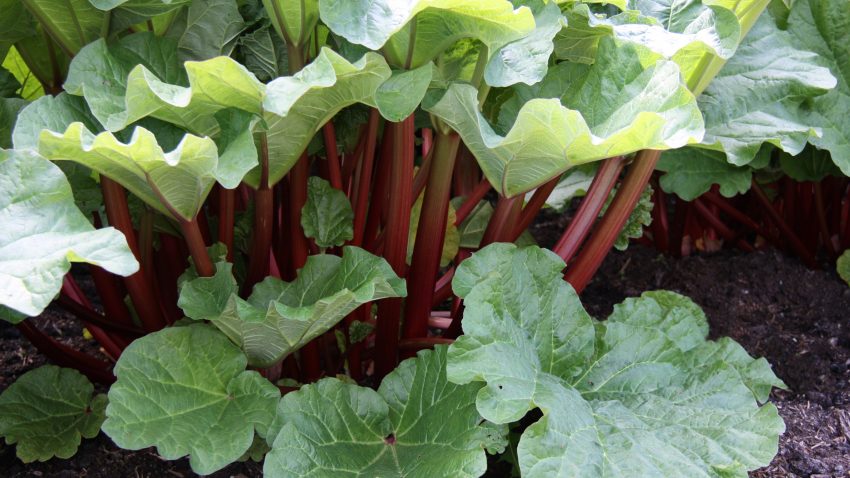◆ Start planning your garden now with this second installment of gardening tips.
Provided By University of Wyoming Extension
Home vegetable gardening is a popular activity all across the United States. Gardening serves many purposes such as providing sources of food, exercise, and maybe even profit for many people.
Wyoming residents can grow excellent vegetable gardens if they are aware of the special problems they may encounter. In Wyoming, the following environmental characteristics may be problems:
• Growing seasons range from short to very short.
• Growing season temperatures are often too low, sometimes too high, and often include untimely frost.
• High or steady winds can cause physical damage to plants plus soil erosion and rapid drying.
• Low relative humidity levels increase the rate of water loss from plants and soil.
• Poor native soils are usually alkaline, low in organic matter, shallow, rocky, and cold.
• Water is possibly low in quantity and poor in quality.
• Hailstorms can be disastrous to vegetable gardens, as well as other crops
Some More Vegetable Gardening Tips:
• Fertilization
Wyoming gardeners should give particular attention to the fertilization of their gardens so growth will not be slowed by lack of nutrients. An early season soil test will determine which nutrients and how much fertilizer may be needed in the garden. Vegetables require adequate and constant nutrient sources, especially as they approach maturity. Options are many, ranging from liquid formulations to slow‑release types, organic to synthetic. Do not over‑apply fertilizers. Over‑application does more harm than good.

• Soil preparation
Organic matter is usually lacking in native Wyoming soils. Pre‑plant incorporation of a high‑quality, well‑composted organic matter will lighten heavy clay soils, improve soil structure, allow better water penetration, allow air to reach root systems (roots must have oxygen), and provide some essential nutrients. Organic matter is recommended as an amendment for sandy soils to improve water‑holding capacity, as well. As an added benefit, organic matter aids soil microorganisms, helping to make nutrients more available for plants.
Apply 2 inches evenly across the garden area, then till or spade it to a depth of at least 6 inches. Never add sand to a clay soil because compaction and density will become problematic.
• Irrigation
Irrigation of the vegetable garden will be necessary anywhere in Wyoming. Use the highest quality water available. Water containing large amounts of dissolved salts will require occasional leaching of the garden to remove these salts. (Another benefit of organic matter in the soil is that it acts as a buffer, tying up salts before they can reach plant roots and cause damage.) Overhead sprinklers and drip irrigation tubes or even hand watering can be used to irrigate. Most vegetables will require at least 1½ inches of water each week as they near maturity.
There are no rules for frequency of irrigation because of variations in weather, soil types, and garden micro‑climates. Gardens growing in sandy soils will require more frequent watering than gardens in clay soils.
To easily determine the amount of water you have applied while irrigating, follow these steps: Choose a straight-sided can or jar. Place the can in the area to be irrigated. Irrigate as you normally would. Using a ruler, measure the amount of water in the can or jar. Determine how much more or less you need to water at each irrigation to give your vegetables about 1½ inches of water weekly. Keep in mind the soil should be moist to a depth of 6 to 8 inches after each irrigation.
Overhead sprinkler irrigation is satisfactory, but few gardeners know how much water they are applying with this method. Sprinkler irrigation also wets leaves, which can lead to foliar disease problems. Trickle or drip irrigation applies water at a very slow rate through tubes set on the ground next to the row of plants. Foliage does not get wet, and the slow trickle allows water to penetrate and soak the area around the roots.
Trickle systems often use less water than other irrigation methods.
• Mulch
Mulching with an organic matter source is an excellent home garden practice that helps maintain uniform moisture and temperature in the soil; reduces erosion, water loss, and weed problems; and adds organic matter when the mulch is turned under. Organic mulches should be applied only after the soil has warmed up in the late spring or early summer; otherwise, the soil temperature will not warm up enough for proper plant growth. Materials that can be used as organic mulches include grass clippings (provided they are herbicide‑ and seed‑free), sawdust, straw, peat moss, wood chips, leaves, or good quality compost. When using organic materials, spread a 2‑ to 3‑inch layer around the plants in mid‑June. Keep it in place through the growing season.
Additional fertilizer will probably be needed, especially fertilizers with nitrogen, because use of any of these materials may cause nutrient deficiencies to develop in vegetable plants. Always fertilize when organic mulches are used. [Keep in mind that nitrogen must be used as directed. Too much nitrogen can potentially damage or burn tender plants and roots.]
Planning your vegetable garden
• Long‑term crops
Perennial vegetables, such as rhubarb and asparagus, should be planted along one side of the garden. This way, they are out of the way of tilling and other preparations.
Tall plants, such as corn and tomatoes, should be planted on the north side of the garden, so they don’t shade the smaller crops.
• Grouping
Try to group plants by the length of their growing period. Separate quick crops from those requiring a full season to mature. Early maturing crops can be planted in the same row or between rows of later‑maturing crops. For example, radishes can be planted in the same row with transplanted cabbage, cauliflower, and broccoli. Lettuce may be grown where tomatoes, peppers, and corn will be planted later.
• Companion Planting
Companion planting is sometimes promoted as a means to deter insect pests from attacking garden vegetables. There is little evidence to support this notion.
The real key to a healthy garden is diversity. The positive effects of using companion plantings come from the added diversification, not necessarily the introduction of a plant that produces a repellent chemical.
• Spacing
Make sure plants are spaced according to seed or label recommendations. Remember to leave space in the garden for maintenance and harvest. Leave enough room to walk and kneel between rows during the growing season.
Cool‑ and warm‑season vegetables
Cool‑season crops grow from early to late spring. Usually, light frosts will not injure them. If planted too late, long hot summer days cause many spring crops to flower and form seeds, [which can be undesirable for flavor and production]. Some plants will develop off‑flavors, bitterness, poor texture, and low yields.
Examples of vegetables suitable for spring gardens are beets, carrots, lettuce, onions, peas, radishes, spinach, and turnips.
Many of these can be replanted in late summer or early fall for late harvest.
Warm‑season crops grow in early through late summer. Late spring and early fall frosts will damage these plants. Examples of warm‑season crops include tomatoes, peppers, melons, cucumbers, squash, pumpkins, and sweet corn.






